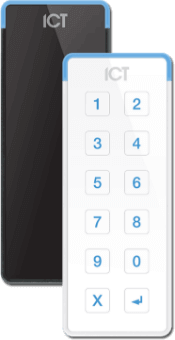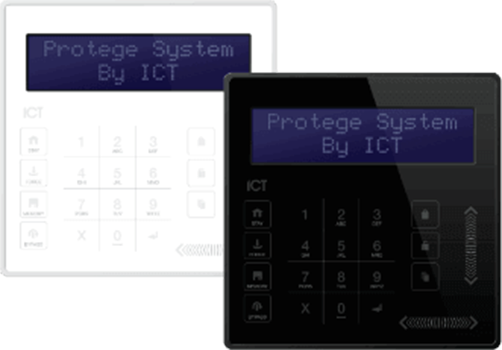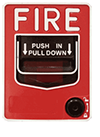Video MGMT System
 Access Control
Access Control
Voice & Data Wiring
 Burglar Alarm
Burglar Alarm
 Fire Alarm
Fire Alarm
Video MGMT System
Voice & Data Wiring
No time to read? Here’s a summary:
Proximity cards, also known as prox cards, are effective and convenient credentials for access control ID verification.
But how do proximity cards work? Keep on reading to explore the intricacies of this popular security solution.
Proximity access control refers to access control systems that use proximity cards to identify users before deciding whether to grant access.
Proximity cards use electronic radio frequency identification (RFID) signals to communicate with door readers. Unlike earlier magnetic stripe cards, which require direct contact with a reader to activate the access control process, proximity cards only need to be in close proximity to a reader.
At the heart of every proximity card is an RFID chip containing a unique identifying number that is specific to the card.
When a proximity card comes within range of an RFID reader, the reader emits a low-power radio frequency. This radio wave interacts with the antenna in the proximity card, creating a small electrical current.
This current powers up the RFID chip, allowing it to transmit its stored data back to the reader.
Once powered, the RFID chip sends its unique identification number (and any other stored data) back to the reader via the antenna. This transmission happens almost instantaneously, allowing for swift access or denial based on the data received.
Many proximity cards use encryption to ensure the security of the data transmission. This means the data sent from the card to the reader is scrambled, making it difficult for potential eavesdroppers to decipher, while the intended RFID reader, with the correct decryption key, can understand the transmitted data just fine.
There are two main types of proximity cards: passive cards and active cards.
Passive cards don’t have their own power source. Instead, they rely entirely on radio waves from the RFID reader to power the chip. Passive cards are commonly used for access control purposes due to their simplicity and cost-effectiveness.
Active cards, on the other hand, come with their own battery source. This allows them to transmit data over longer distances. Active cards are typically used for more complex applications, such as vehicle tracking and asset management.
Different proximity cards operate at various frequencies depending on their intended use. Common frequencies include:
Enhanced Security: Proximity cards offer a higher level of security than traditional keys and even magnetic stripe cards. A proximity card’s unique identification number, when properly encrypted, makes it more difficult to duplicate.
Convenience: Users don't have to fumble with keys or swipe cards through a reader. Simply being near the reader is enough to be granted or denied access.
Durability: Prox cards are less prone to wear and tear since they don't require direct contact with a reader.
Integration Capabilities: Most proximity access control systems can integrate with other security systems for a comprehensive security solution.
Easy Management: Administrators can quickly add, remove, and tailor access permissions to different staff needs. This easy adjustability makes proximity cards ideal for businesses with high employee turnover or multiple access levels.
Proximity cards are versatile and useful in many settings, including the following:
Offices and Corporate Buildings: Control who can access certain floors or rooms.
Hospitals: Ensure only authorized personnel can enter specific wards or access restricted medications and equipment.
Educational Institutions: Restrict access to labs, libraries, or dormitories.
Government Facilities: Enhance the security of sensitive areas.
Parking Lots: Allow only authorized vehicles to enter or exit.
It's crucial to engage with seasoned access control specialists to establish an access control system tailored to your site's distinct security and operational demands. At Mammoth Security, we collaborate with you to choose the most suitable products for your site security.
For a no-obligation consultation with a friendly security professional from our team, simply complete the form below. We'll promptly reach out to arrange a free site evaluation and determine your specific needs.
NOT COMPLETELY SURE?
860-748-4292Proximity access control refers to systems that use proximity cards to identify users and decide whether to grant access.
Proximity cards use electronic RFID signals to communicate with door readers without direct contact.
Unlike magnetic stripe cards that require direct contact with a reader, proximity cards only need to be near the readers.
The RFID reader emits a low-power radio frequency that interacts with the antenna in a passive proximity card, powering the RFID chip and allowing data transmission.
Powered by its own battery or a transmitted radio wave from a reader, the RFID chip sends its unique identification number and any other stored data to the reader almost instantly.
Active cards have their own battery source for longer data transmission distances, while passive cards rely on radio waves from the RFID reader for power.
Most building access proximity cards operate at a Low Frequency (LF), around 125 kHz.
Proximity cards offer enhanced security, convenience, durability, integration capabilities, and easy management.
They are used in offices, hospitals, educational institutions, government facilities, and parking lots to control access.
Prox cards don't require direct contact with a reader, making them less prone to wear and tear.
Administrators can quickly adjust access permissions, making it easy to manage access for different staff needs.